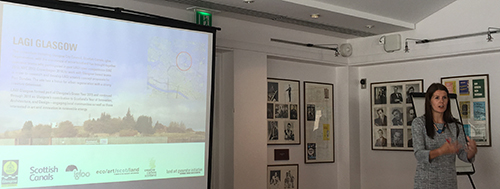
Cities that recognize the value of arts and culture have long benefited from percent for art programs. It has become expected (and in many cases required) for large-scale development projects to invest at least 1% in the arts, especially when there is public funding involved, either by bringing an artist onto the project team to produce a local outcome, or by investing in a fund that is pooled for larger projects throughout the city.
As we increase our focus on large-scale environmental and climate design solutions—resilient infrastructures, environmental remediation, regenerative water and energy projects—it is high time that a similar percent for art requirement be placed on these projects as well. This simple policy standard would bring great benefit to communities that otherwise find themselves left out of the process. Even when their net benefit to the environment is clear, if these projects have not been considered from a cultural perspective, they risk being ignored at best. And at worst they risk alienating the public and sparking push-back against similar future projects.
Involving artists in the process can instead deliver a more holistic approach to sustainability that addresses social equity, environmental justice, aesthetics, local needs, and other important cultural considerations. As we have said from the founding of LAGI in 2008, “sustainability is not only about resources, but it is also about social harmony.”

Ben Twist, Director of Creative Carbon Scotland, kicks off the workshop
While in Scotland to conclude the first phase of LAGI Glasgow—with the opening of the Exhibition at The Lighthouse and the announcement of the Wind Forest proposal as the project to be taken forward—we were invited by Creative Carbon Scotland to take part in the Beautiful Renewables Practical Workshop in Edinburgh.
The idea of a Percent for Art for Energy has been on our minds for quite a while. We see this as the perfect funding mechanism to realize the kind of ideas that result from Land Art Generator Initiative design competitions and projects. So it was music to our ears to hear Inge Panneels (Artist and Lecturer at the University of Sunderland) reference percent for art as a part of the discussion at this week’s workshop. Inge was attending with her colleagues to discuss one of the two case study projects, both in early stages of development. The aim was to involve an interdisciplinary group in a discussion of ways in which renewable energy infrastructure could be seamlessly integrated into these two projects through an art and placemaking approach.

Heather Claridge (Glasgow City Council, Senior Project Officer, Forward Planning, Development & Regeneration Services) talks about the LAGI Glasgow process.
We were also delighted to learn from Andrew Maybury with Community Energy Scotland about the rapid expansion of community energy groups in the UK, which are leading the charge for distributed and socially-equitable sustainable energy projects.
Chloe Uden (Arts & Energy programme manager at Regen SW) was also there to share her experience working with community energy groups and her success engaging the public with climate issues through artist collaborations. You can read more about her perspective and reflections on the day (“Every community energy group should invite an artist onto its board!“) at Power Culture. We couldn’t agree more!
Related Posts
5 Comments
Add comment Cancel reply
This site uses Akismet to reduce spam. Learn how your comment data is processed.

[…] Monoian and Robert Ferry from the Land Art Generator Initiative posed the idea for a ‘Percent for art’ as a requirement for energy projects, adaptation projects, environmental remediation etc. Some […]
[…] Monoian and Robert Ferry from the Land Art Generator Initiative posed the idea for a ‘Percent for art’ as a requirement for energy projects, adaptation projects, environmental remediation etc. Some […]
[…] Monoian and Robert Ferry from the Land Art Generator Initiative posed the idea for a ‘Percent for art’ as a requirement for energy projects, adaptation projects, environmental remediation etc. Some […]
[…] More… […]
[…] More… Share this:Click to email (Opens in new window)Click to share on Reddit (Opens in new window)Click to share on Tumblr (Opens in new window)Click to share on Pinterest (Opens in new window)Click to print (Opens in new window)Click to share on Twitter (Opens in new window)Click to share on Google+ (Opens in new window)Click to share on LinkedIn (Opens in new window)MoreShare on Facebook (Opens in new window)Like this:Like Loading… […]